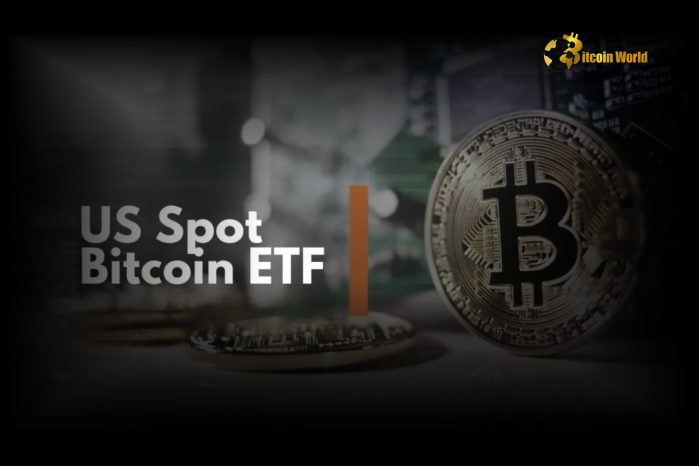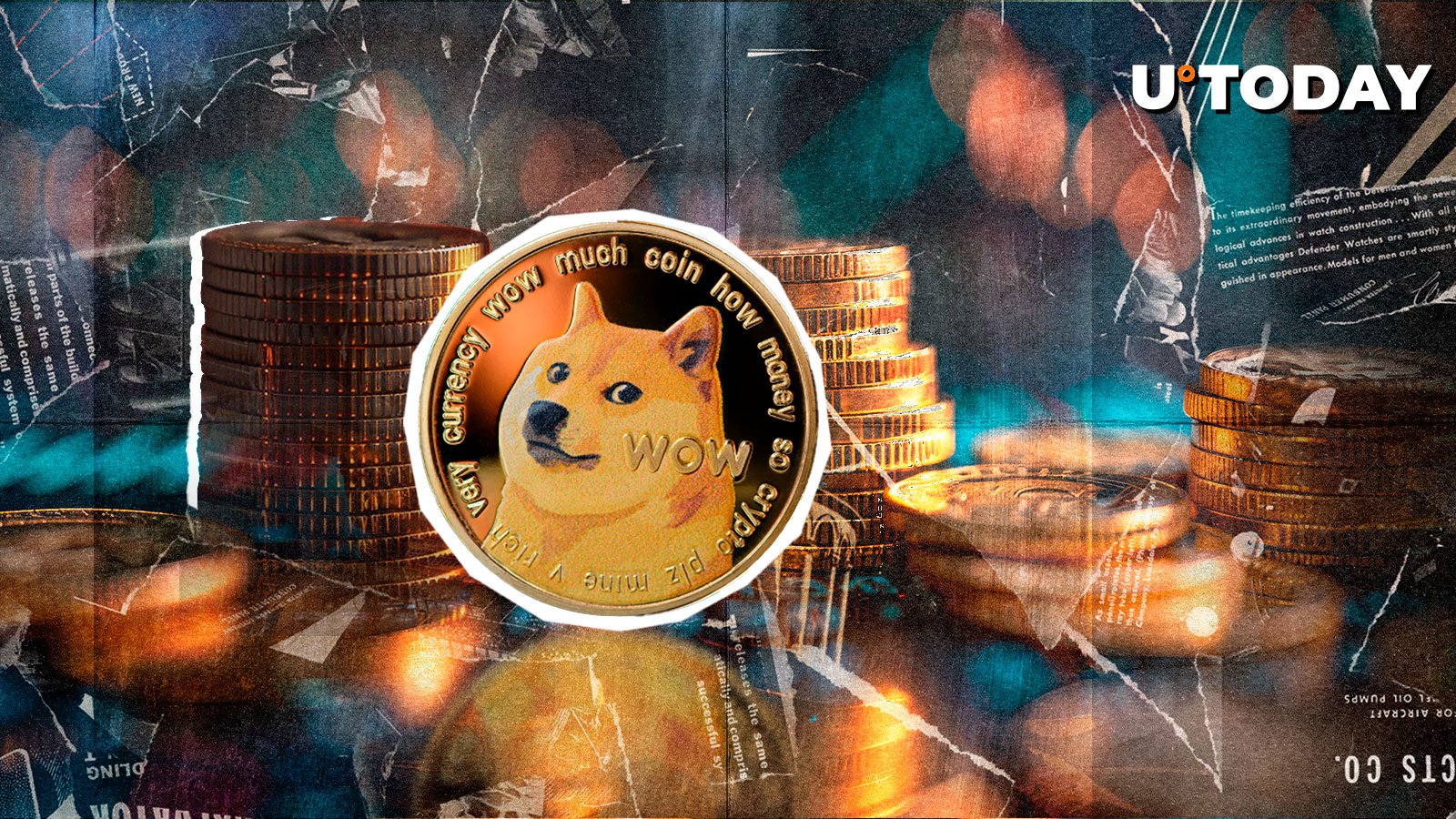
Michaël van de Poppe predicts NEAR`s price could surge significantly soon. Bitcoin is expected to consolidate before breaking its all-time high. Continue Reading: Watch NEAR Skyrocket as Market Dynamics Shift! The post Watch NEAR Skyrocket as Market Dynamics Shift! appeared first on COINTURK NEWS .
CoinTurk News
You can visit the page to read the article.
Source: CoinTurk News
Disclaimer: The opinion expressed here is not investment advice – it is provided for informational purposes only. It does not necessarily reflect the opinion of BitMaden. Every investment and all trading involves risk, so you should always perform your own research prior to making decisions. We do not recommend investing money you cannot afford to lose.
Bitcoin Price Analysis: BTC Pops And Drops After Mixed Jobs Report

Bitcoin (BTC) rallied to push above the $100,000 mark briefly but lost momentum following a mixed jobs report that showed lower levels of unemployment yet slowed job growth in the US economy. As a result, the flagship cryptocurrency fell nearly 1% over the past 24 hours and trading around the $96,200 mark. Markets have remained mixed and the crypto market cap is down 0.55% and currently sits at $3.13 trillion. Robert Kiyosaki On Why He Bought More BTC Rich Dad Poor Dad author Robert Kiyosaki discussed why he purchased Bitcoin (BTC) , along with another safe-haven asset, Gold. According to Kiyosaki, holding these assets is much safer than saving up and holding fiat currencies, including the US Dollar. “WHY I bought more Gold and Bitcoin. Answer: Owning Gold and Bitcoin is smarter and safer than saving dollars.” Followers on X countered Kiyosaki’s arguments, pointing out that other assets like Litecoin (LTC) are also worthy investments. LTC has built up a reputation of being the silver to Bitcoin’s Gold. Another user stated that Bitcoin is denominated in US dollars, something that Kiyosaki despises. Kentucky Introduces Bitcoin Reserve Bill Kentucky has become the 16th US state to introduce a Bitcoin reserve bill. The bill proposes investing 10% of state funds in digital assets with a market cap of over $750 billion. The bill states the reserve will not be restricted to BTC . However, the flagship cryptocurrency is the only digital asset that matches the requirement. Prior to Kentucky, 15 US states had begun legislative efforts to incorporate BTC in their financial strategies, citing several benefits like economic diversification, inflation hedging, and technological innovation. Alabama proposed a Bitcoin reserve to attract crypto-focused businesses and mitigate economic uncertainties. Arizona, a long-time advocate of blockchain adoption, has advanced legislation to allocate public funds towards BTC , while Florida is exploring the feasibility of a Bitcoin reserve to diversify assets and attract investments. Massachusetts and Montana have also introduced plans to include Bitcoin in their public funds, while North Dakota, New Hampshire, and Ohio are advancing similar legislation. Jobs Data Adds To Market Uncertainty The latest US jobs report from the Department was a mixed bag, revealing the addition of 143,000 jobs in January. This figure fell well short of economists’ predictions of 170,000. The unemployment rate dropped from 4.1% to 4%, signaling a mixed economic picture. BTC and other risk assets tend to react to labor market data since it can influence the Federal Reserve’s decisions on interest rates. A slowdown could increase speculation about future rate cuts, benefiting BTC and other risk assets and making them more attractive than traditional financial instruments like bonds and savings accounts. Bitcoin (BTC) Price Analysis Bitcoin (BTC) briefly surpassed $100,000 after the US Bureau of Labor Statistics released the January 2025 employment data. However, BTC lost all of its gains, quickly tumbling to its current level of $96,000 and struggling to hold on to the level. The data showed strong wage growth last month, indicating consumers are likely to continue spending. The unemployment rate also dropped from 4.1% to 4%, indicating the Federal Reserve could pause interest rate cuts in the short term. A low unemployment rate means people will spend more, increasing prices. The Federal Reserve cut interest rates thrice in 2024 after raising them to two-decade highs in 2022 to tame inflation. The Fed’s decision to lower the cost of borrowing saw Bitcoin and other cryptocurrencies surge, leading to the flagship cryptocurrency surging past $100,000 and setting a new all-time high. BTC has experienced sluggishness and an increased level of volatility over the past week thanks to several economic and geopolitical developments. The flagship cryptocurrency has traded in the red since Friday as it struggles to move past $100,000, as demonstrated in its latest price action that saw the price briefly surpass $100,000 before dropping back. BTC encountered volatility on Friday as buyers and sellers struggled to establish control. Sellers ultimately gained the upper hand, and the price fell 1.85% to $102,616. Sellers retained control over the weekend, and BTC fell below the 20-day SMA, dropping to $101,041. Bearish sentiment intensified on Sunday as BTC plummeted below $100,000 and the 50-day SMA to $97,881. Source: TradingView Markets opened in the red on Monday, and BTC tanked to an intraday low of $91,274, slipping below key support levels. It recovered from this level, rebounding to reclaim $100,000 and settle at $101,579. However, its rally was short-lived as it fell 3.54% on Tuesday, slipping below $100,000 and the 50-day SMA to $97,969. Sellers retained control on Wednesday and BTC fell 1.34% to 96,668. Buyers attempted a recovery on Thursday as BTC reached an intraday high of $99,247. However, it lost momentum after reaching this level and dropped to $96,641. Friday saw BTC briefly cross $100,000, reaching an intraday high of $100,216 following the release of US jobs data. However, it quickly retreated from this level and dropped to $96,634. The current session sees BTC marginally down as it struggles to stay above $96,000. BTC has traded between $92,000 and $106,000 since the end of December, with neither the bulls nor the bears able to make a decisive move. However, BTC has shown resilience in the face of several macroeconomic challenges. It was mostly unfazed by the stock market turmoil triggered by DeepSeek, the Chinese AI model. It was also relatively unscathed by renewed trade tensions between the US and China. Buyers must prevent a move below $96,000 and reclaim $100,000 for the current bearish sentiment to change. Disclaimer: This article is provided for informational purposes only. It is not offered or intended to be used as legal, tax, investment, financial, or other advice. CoinTurk News

Tether Partners with Reelly Tech to Boost USDT Adoption in UAE Real Estate; Surge in Stablecoin Inflows Signals Market Shifts
Tether, the issuer of the world’s largest stablecoin, USDT , has signed a Memorandum of Understanding (MoU) with Reelly Tech, a leading real estate B2B platform in the UAE. This partnership will enable more than 30,000 local and international agents using the Reelly Tech platform to transact in USDT, part of a broader effort to make the stablecoin more useful outside of its traditional, closed-loop stablecoin utility. These agents might be using USDT as a payment method for virtual real estate. As concerns about the USDT’s backing persist, a major testing ground for the stablecoin’s utility is shaping up in the UAE real estate market. Tether has signed an MoU with Reelly Tech, one of the UAE’s real estate B2B platforms. More than 30,000 local and international agents on the Reelly Tech platform will be able to use USDT to streamline processes and increase efficiency. https://t.co/qi29fxj3bO — Wu Blockchain (@WuBlockchain) February 6, 2025 Simultaneously, this week has been a giant uptick in activity for stablecoins, anchored by a jaw-dropping $2.72 billion USDT being ushered into exchanges. This massive amount arriving on exchanges has sparked a whole lot of excitement in the market as it has sent everyone’s imaginations running with what might be happening here. Could this be an enormous prep for a market move that folks seem to love using USDT for? Could this be pre-leveraging? Could this be something much, much bigger? A Strategic Partnership with Reelly Tech to Expand USDT Usage Tether’s agreement with Reelly Tech is an important step for USDT in moving into new territory. Most of the time, USDT (and the other stablecoins) are used in the same context as Bitcoin and other cryptocurrencies: that is, in trading on or between exchanges. The deal between Tether and Reelly Tech is focused on using USDT, and by extension Tether’s other products, as a way of paying for real estate in the UAE. By getting into that market, Tether is clearly attempting to push USDT into a new context, where it can pay for things, into an area where people before had only used fiat currency. Reelly Tech, a leading real estate platform with a strong foothold in the UAE, will now enable over 30,000 agents to use USDT for real estate transactions—buying, selling, and leasing—in that nation. This is expected to speed up such transactions, limit the problems associated with converting one currency to another, and improve the transparency of these often murky deals. For agents and clients, the stablecoin’s use could simplify account funding, especially when dealing with international transactions or using a stablecoin to pay for a high-value asset in a high-inflation environment. As the UAE sets itself up as a global center for the adoption of cryptocurrency, the partnership between Tether and Reelly Tech takes us a step further toward marrying the Blockchain and digital asset world with traditional sectors. And we should pay particular attention to this collaboration because, guess what? It’s real estate that really stands to gain from this partnership. USDT’s stability, alongside its widespread use across crypto exchanges, presents a solution that could very well make property deals involving both domestic and international investors as straightforward as local governance will allow. Record Stablecoin Inflows: A Sign of Market Sentiment This week saw the titanic transfer of $2.72 billion USDT to exchanges that in turn established the largest net inflow of stablecoins since 2022. This inflow is all the more interesting when you consider it in the context of the recent market downturn, which had us liquidating across the crypto space. What does it mean? Well, one theory is that we traders are using stablecoins like USDT as collateral to protect ourselves on the not-so-leveraged side of the crypto-i-melt-down. Or alternatively, maybe we’re portending another market move, which could be either up or down from here. The inflow coincides with a wider pattern of market instability. As prices across the cryptocurrency market fluctuated sharply, many investors likely moved their assets into stablecoins to mitigate risk. In the face of volatile market swings, stablecoins like USDT provide a safe haven—liquid and valuing-preserving. They are a risk-off asset. Status as a risk-off asset is especially important during times of liquidation, when prices are dropping precipitously, because “Investors who might have otherwise been panic-selling…could have been moving into USDT instead.” The recent inflow of stablecoins to exchanges may be a sign that market participants are preparing for the next move, big or otherwise. This is exactly what you’d expect in uncertain times, when traders are turning over their portfolios but also taking a more strategic and less reactive path. The last couple of weeks have seen a blend of profit-taking and precautionary moves into cash in the wake of a sharp downturn. Implications for the Broader Crypto Market The inflow of stablecoins and Tether’s increasing adoption in the real estate sector both reflect the overarching trends shaping the cryptocurrency world. Stablecoins—especially USDT—are rapidly establishing themselves as a vital part of the financial ecosystem. They are providing on-ramps and off-ramps to the ecosystem for traders and businesses, representing the sort of stability one might associate with the U.S. dollar. And as Tether continues to find use cases outside of crypto itself, its aspirations to serve as a global bridge between the financial world and the crypto world become even more evident. Furthermore, the arrival of USDT to the exchanges indicates that the market may be on the brink of some volatility or dislocation. While inherently risky, the realm of cryptocurrencies contains within it a certain level of expectedness; prices may go up or down, but they go in those directions for reasons that knowledgeable market players understand and can articulate. What these stablecoin trades suggest, then, is that our market is currently not at a place where knowledgeable players expect a series of articulated reasons to underpin what price changes might occur. $2.72B USDT was sent to exchanges this week, the largest net inflow since 2022! This surge seems to coincide with the recent market dip that triggered widespread liquidations, potentially prompting traders to move stablecoins to exchanges for added collateral and to safeguard… pic.twitter.com/KmP36YWX9n — IntoTheBlock (@intotheblock) February 6, 2025 Stablecoins serve a larger purpose; they are pointedly steering the global economy in the direction of an integrated blockchain and cryptocurrency future. They do so because they have a clearly defined function: to exist as reliable mediums of exchange. And in the integrated global economy, there is no more reliable a medium of exchange than the U.S. dollar, which sheds light on why U.S. dollar-pegged stablecoins, like Tether, dominate the marketplace. Conclusion Tether, through its MoU with Reelly Tech, marks a very big deal going well past just cryptocurrency and into USDT’s presence in real estate—one of the key sectors of the traditional economy. This isn’t USDT’s first venture into brick-and-mortar territory, though, as it had already signaled its intentions to move in that direction by bringing on former live-real-estate auctioneer Patrick O’Hare as its chief business development officer in late 2022. Meanwhile, inbound stablecoin liquidity to crypto exchanges continues to increase. Beyond what seems like an inevitable trend toward more crypto-market infrastructure being built out, this raises another interesting question: What, exactly, is USDT’s role in this newfound liquidity? Disclosure: This is not trading or investment advice. Always do your research before buying any cryptocurrency or investing in any services. Follow us on Twitter @nulltxnews to stay updated with the latest Crypto, NFT, AI, Cybersecurity, Distributed Computing, and Metaverse news ! CoinTurk News











